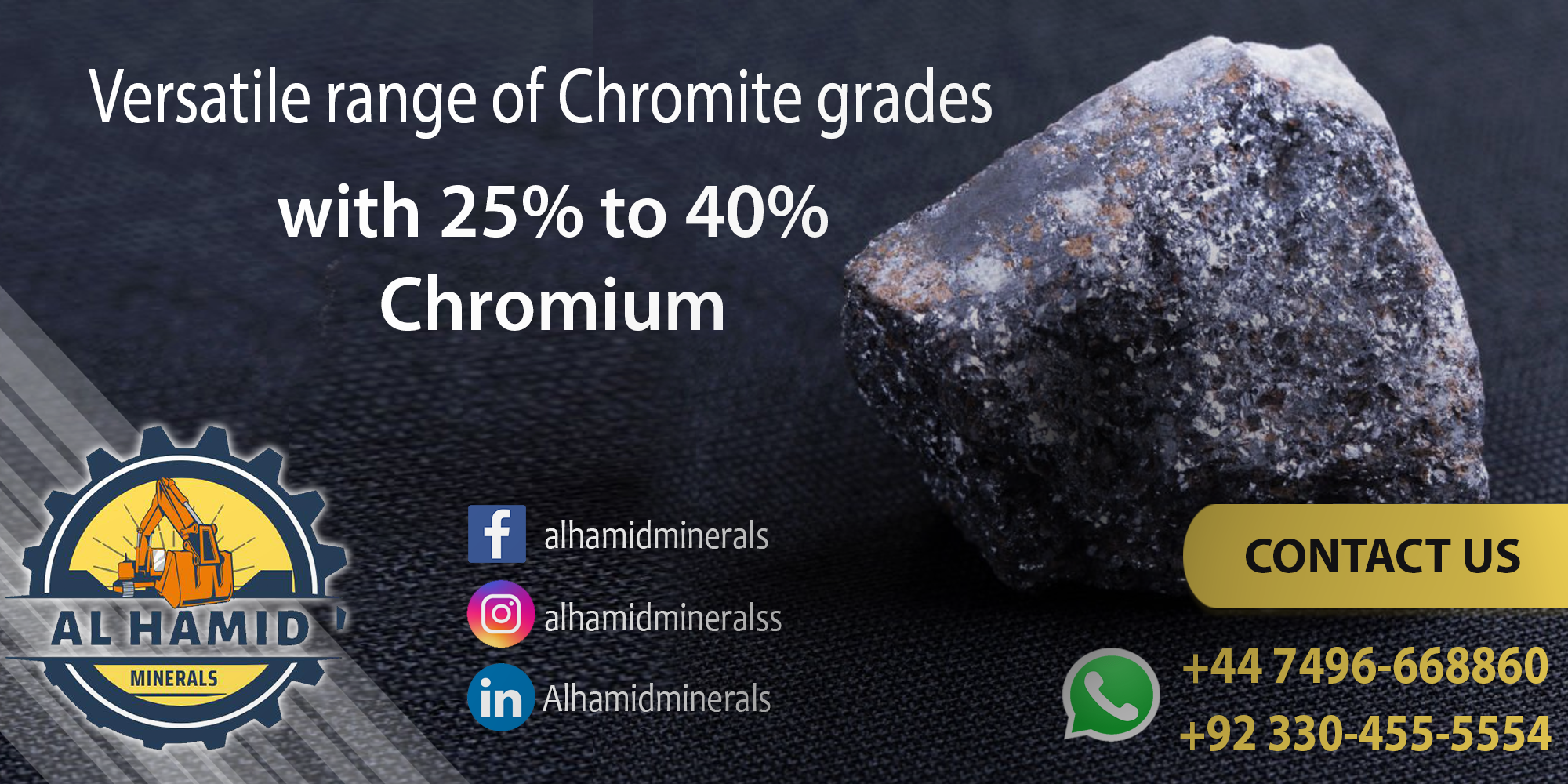Chromite Mining: Types, and Uses

Table of Contents
- Understanding Chromite Mining
- Exploring Chromite Types
- Unleashing Chromite's Versatile Uses
- The Sustainable Future of Chromite Mining
- Conclusion: Chromite - A Cornerstone of Modern Industry
- Call to Action: Partner with Al Hamid Minerals for Sustainable Chromite Solutions
Introduction
Chromite, a seemingly inconspicuous mineral, plays a critical role in shaping the modern world. From the gleaming skyscrapers gracing cityscapes to the durable cookware in our kitchens, chromite's influence is undeniable. This blog delves into the intriguing world of chromite, exploring its mining processes, diverse types, and extensive uses across various industries.
Understanding Chromite Mining
The journey of chromite begins deep within the Earth's crust. Chromite mining involves extracting this valuable mineral ore from underground deposits or open-pit mines. Careful planning and responsible practices are essential to minimize the environmental impact of mining operations.
Here at Al Hamid Minerals, we are committed to sustainable mining practices. We employ advanced technologies and techniques to ensure responsible extraction while minimizing environmental disruption.
Exploring Chromite Types

Not all chromite is created equal. This versatile mineral exists in various types, each with its own unique properties and applications. Let's explore the two most common types:
1. Metallurgical Grade Chromite
This type of chromite, as the name suggests, is primarily used in the production of ferrochrome, a crucial alloy in stainless steel manufacturing. Its high chromium content (Cr) enhances the corrosion resistance and durability of stainless steel products, making them ideal for applications ranging from kitchen appliances to architectural structures.
2. Refractory Grade Chromite
Refractory grade chromite is prized for its exceptional heat-resistant properties. This characteristic makes it indispensable in the production of refractory materials, such as furnace linings, bricks, and molds. Its ability to withstand extreme temperatures and chemical erosion is vital for various industrial processes, ensuring efficient operations and product quality.
Unleashing Chromite's Versatile Uses
Chromite's diverse properties unlock its potential across a wide range of industries, driving innovation and progress. Here's a closer look at some of its key applications:
Metallurgy
As a cornerstone ingredient in stainless steel production, chromite contributes to countless applications, including medical equipment, food processing equipment, and automotive parts.
Chemical Industry
Chromite serves as the foundation for various chromium-based compounds used in pigments, dyes, and catalysts. These compounds play a vital role in diverse sectors, from enhancing the vibrancy of paints to accelerating chemical reactions in industrial processes. You can learn more about chromium compounds here.
Refractory Industry
Refractory grade chromite forms the backbone of heat-resistant materials used in furnaces, kilns, and foundries. Its ability to withstand extreme temperatures ensures efficient energy use and protects vital equipment during high-temperature industrial processes.
Foundry Sands
Chromite finds application in the production of molds and cores used in metal casting. Its high thermal conductivity and stability contribute to the creation of high-quality castings for various industries.
Chromite's Versatile Uses
Chromite finds extensive use across a wide range of industries, including:
- Metallurgy: As a key ingredient in stainless steel production.
- Chemical Industry: In the manufacturing of chromium-based compounds for diverse applications, including pigments, dyes, and catalysts.
- Refractory Industry: For constructing heat-resistant materials used in furnaces, kilns, and foundries.
- Foundry Sands: In the production of molds and cores for casting metals.
Chromite's versatility and unique properties make it an indispensable resource in modern industrial processes, driving innovation and progress across various sectors.
Powering progress globally
Al Hamid Minerals supplies high-grade chromite, essential for stainless steel and refractories, to leading industries in China and Europe.
Al Hamid Minerals Website: Al Hamid Minerals
Connect with Al Hamid Minerals on Social Media:
- Facebook: Al Hamid Minerals Facebook
- LinkedIn: Al Hamid Minerals LinkedIn
- Twitter: @alhamidmineral
- Instagram: @alhamid_minerals
